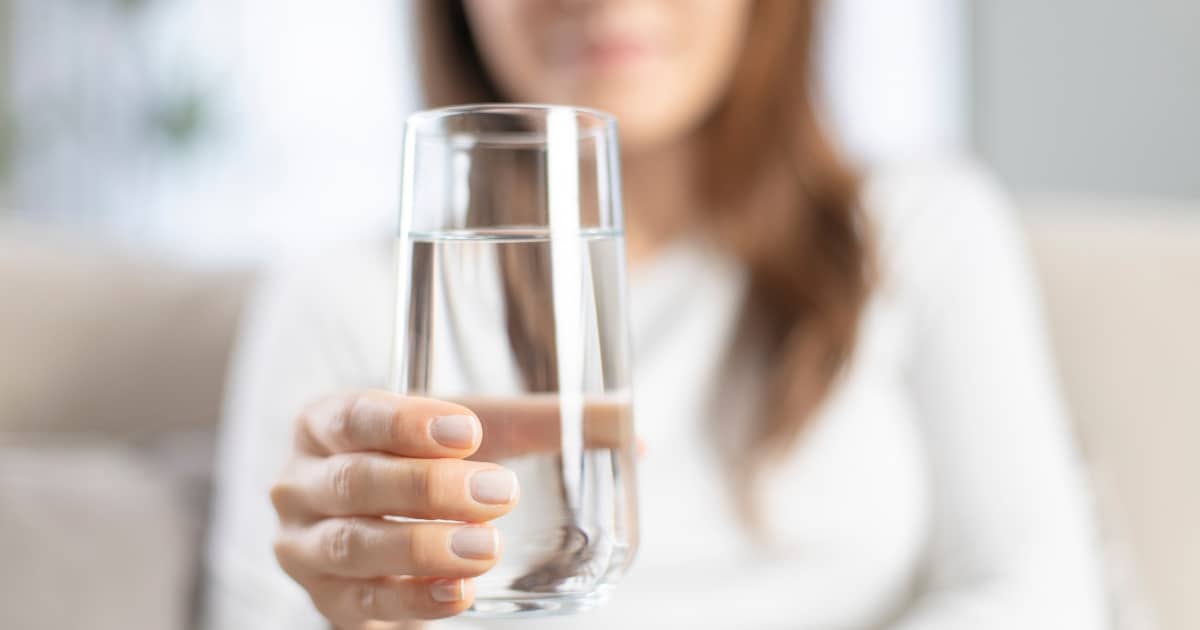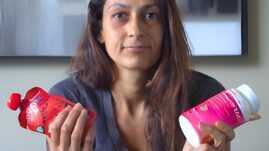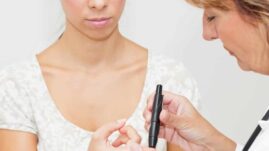Polydipsia, the persistent feeling of extreme thirst, is commonly associated with diabetes.
While extreme thirst is a well-known symptom of undiagnosed diabetes, polydipsia can occur in people with existing diabetes for many reasons.
This article will investigate the connection between diabetes and polydipsia and what you can do about it if you struggle with this condition.

What is polydipsia?
Polydipsia is a medical term meaning extreme or excessive thirst.
Thirst is a normal sensation that lets you know that your fluid balance is off and that you should drink something. But a persistent feeling of thirst, especially if you’re already drinking a lot of fluids, is not normal and may be a sign of a medical condition.
If polydipsia leads someone to drink an excessive amount of fluids to quench their thirst, it can also result in polyuria, the medical term for when a person is producing excessive urine.
But how much fluid intake is considered polydipsia? Generally drinking 5 or 6 liters of liquid per day and continuing to feel thirsty would be considered polydipsia.
What can cause polydipsia and extreme thirst?
Polydipsia is a symptom of several conditions, including:
- Undiagnosed diabetes. Type 1 diabetes, type 2 diabetes, gestational diabetes, and prediabetes all can trigger polydipsia
- High blood sugar in someone who has already been diagnosed with diabetes mellitus
- Diabetes insipidus, a rare condition that is unrelated to diabetes mellitus. Diabetes insipidus does not impact blood sugar levels, but instead causes polydipsia and polyuria because the kidneys do not concentrate urine correctly
- Acute dehydration
- Some behavioral health conditions, including certain anxiety disorders
- Certain serious kidney injuries or diseases, including renal cystic disease, liver diseases, as well as heart failure
- Serious infections, including sepsis
- Electrolyte imbalances, particularly hypokalemia (low concentrations of potassium in the blood)
In addition to diagnosable medical conditions, temporary extreme thirst can also be caused by loss of fluids from diarrhea or vomiting, or from sweating, particularly if the temperature is high.
Many people will also experience it from dietary factors, like consuming excessive alcohol or caffeine, or from eating very salty meals.
Pregnancy and some prescription drugs can also trigger extreme thirst.
Some people will experience polydipsia during the night if the temperature in their bedroom is too high, or because of nasal congestion or a condition that causes them to breathe through their mouths when sleeping instead of through their noses.
Many factors and conditions can lead to excessive thirst, but if that thirst persists for several days and isn’t helped by drinking enough liquid, it’s a good idea to talk to a doctor or medical provider.
Diabetes and polydipsia
Excessive thirst is one of the major warning signs of diabetes and it is often among the first symptoms a person will notice before being diagnosed.
For this reason, you should not ignore unexplained polydipsia.
The reason that diabetes and feeling thirsty are so connected is that hyperglycemia (having high blood sugar levels) often causes a feeling of thirst.
When someone’s blood sugar is high, their kidneys have to do extra work to absorb the excess sugar circulating in the blood. Much of this extra sugar is also flushed from the body in the urine. The body has to pull fluid out of organs and tissues to accomplish this, but doing that throws off the body’s normal fluid balance leaving a person dehydrated.
Humans, like most other living organisms, have to keep their fluid levels within a very narrow range in order to stay healthy. When someone becomes dehydrated because their tissues are giving up excessive liquid to help flush out excess sugar, the brain detects the imbalance and triggers the sensation of thirst.
If someone’s blood sugar levels remain high, their kidneys will continue trying to flush out the excessive sugar, meaning that dehydration will continue, fluid levels will not return to normal, and they’ll likely continue to experience extreme thirst.
However, with the help of a medical professional, blood sugar levels can be brought under control, which will usually resolve excessive thirst pretty quickly.
Depending on the type of diabetes someone has, doctors and other medical providers will prescribe some combination of medications (like injectable insulin or oral metformin), as well as suggested dietary, exercise, and behavior guidelines to follow.
Manual “fingerstick” blood sugar testing or a continuous glucose monitor are also likely to be prescribed to help track blood sugars over time and help someone with diabetes adjust their medication or diet to avoid high or low blood sugar.
A hemoglobin A1C blood test is also likely to be ordered to track average blood sugars over a three-month period.
All these tools together can help people with diabetes avoid high blood sugar levels and the symptoms like polydipsia that often result.
After getting blood sugar levels back to a normal range, most people with diabetes will find that their excessive thirst goes away quickly.
Is polydipsia a symptom of diabetic ketoacidosis?
Having higher than normal blood sugar levels (hyperglycemia) can cause polydipsia. And prolonged, or very high, high blood sugar levels can lead to diabetic ketoacidosis (DKA).
Excessive thirst and excessive urination are common early symptoms of diabetic ketoacidosis.
If you’ve been diagnosed with diabetes, it’s important to keep an eye on your blood sugar levels, and to watch out for the symptoms of DKA, including unquenchable or excessive thirst and needing to urinate more often than normal.
If you believe you are in DKA, it’s important to seek medical care right away.
How can you address excessive thirst if you have diabetes?
For most people, the key to solving polydipsia is to get blood sugar levels into a normal range.
To stop feeling excessively thirsty if you have diabetes, it’s important to both drink sufficient liquids to rehydrate yourself and to also bring blood sugar levels safely back to a normal range, which is around 80 to 130 mg/dL, unless you’ve eaten very recently.
When drinking fluids to rehydrate yourself, it’s best to avoid drinks that are high in carbs or added sugar (unless your blood sugar is low).
Preventing your blood sugar levels from staying high for long periods of time, and bringing them safely back down into a normal range when they do go high, are the keys to keeping yourself from feeling excessive thirst from diabetes.
If blood sugar levels are in a normal range and excessive thirst persists even after drinking plenty of fluids, it’s a good idea to talk to a doctor or medical provider.
Conclusion
Polydipsia, or excessive thirst, is something that people with diabetes often experience before diagnosis, but it can also occur after diagnosis if blood sugar levels are high and if a person is in diabetic ketoacidosis.
Dehydration, fluid imbalances, and electrolyte imbalances all can contribute to polydipsia, and all of these can be results of blood sugar levels being out of a normal range.
Rehydrating yourself by drinking plenty of liquids and carefully managing your blood sugar levels to prevent serious or prolonged high blood sugar are the best steps to take to resolve polydipsia.
Many conditions and other factors can cause someone to be excessively thirsty, but if that feeling persists for several days and isn’t helped by drinking liquids and keeping blood sugar in range, it’s a good idea to talk to a doctor or medical provider right away.



